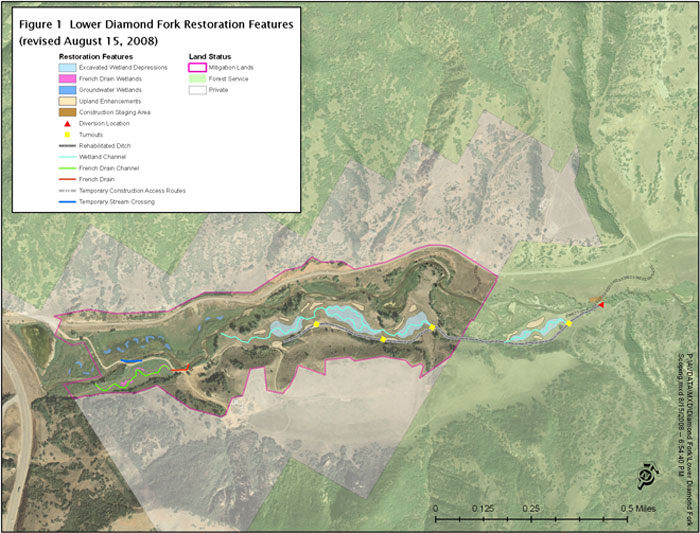|
The restoration project will increase sinuosity and promote increased channel complexity in lower Diamond Fork Creek;
create and restore wetlands; and increase vegetatative diversity of upland areas. [Click here to download the Draft Conceptual Design Proposal for restoring Lower Diamond Fork Creek.]
National Environmental Policy Act analysis was completed and a stream alteration permit was obtained for the project in 2008.
[Click here to download the Decision Memo for the lower Diamond Fork restoration project.]
The project area begins at Highway 6, near the confluence with the Spanish Fork River, and extends upstream approximately 9,000 feet. This section of stream was determined to offer the best location for immediate, active restoration measures.
Main channel work in this area consisted of introducing woody debris to promote lateral movement of the channel. This was completed in the fall 2008. Large rocks and logs were put in the channel to force the creek to flow around two debris jams (see photos, right). This is intended to create a more sinuous channel with increased water depth and better aquatic habitat.
If meanders begin to form, the stream is likely to create diversity of habitat without further intervention. This approch limits the degree of disturbance from heavy equipment while still pushing the stream toward a desirable condition.
The remainder of the restoration plan (see map below) is to be carried out beginning in May 2009. It includes creating features such as excavated depressions, several small side channels, and a series of small ponds that would provide wetland habitat improvement in a meadow southeast of the channel; rehabilitating an existing ditch system in the project area; and, rebuilding an irrigation diversion system (located on National Forest System lands) that was washed out several years ago during high flows.
|



